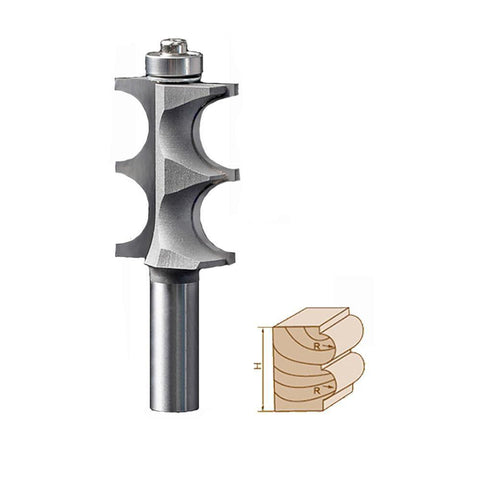A Comprehensive Guide to Router Bits
For woodworking enthusiasts and professionals alike, router bits are indispensable tools that bring precision and creativity to projects. Each type of router bit serves a specific purpose, allowing for intricate designs, clean cuts, and polished finishes. Understanding the diverse range of router bits and their applications can significantly elevate the quality of your woodworking.
Introduction to Types of Router Bits
At the core of router bit selection is recognizing the various shapes and profiles available. One of the most commonly used bits is the straight bit. This versatile tool is ideal for making precise cuts along the edges or for hollowing out areas of wood. It comes in various diameters and lengths, allowing you to achieve different depths and widths of cuts. Whether you're trimming, grooving, or simply edging, the straight bit is fundamental for achieving a clean, professional finish.
Next in line are the spiral bits, which are divided into two primary categories: up-cut and down-cut. Up-cut spiral bits are designed to pull chips and debris upwards, away from the workpiece, making them ideal for creating clean cuts on the top surface of your material. On the other hand, down-cut spiral bits push debris downward, resulting in a smoother finish on the top surface while leaving a rougher cut on the bottom. Each type offers distinct advantages depending on the desired outcome and material being worked on.
For those seeking decorative edges and profiles, the router bit world offers a range of options. The flush trim bit, for instance, is used to trim the edge of one piece of wood to match another, often used in veneer applications. This bit features a bearing that rides along the edge of the template or guide, ensuring an even trim. Another essential decorative bit is the chamfer bit, which creates a beveled edge, providing a polished look to corners and edges.
In addition to decorative edges, the dovetail bit plays a crucial role in creating strong, interlocking joints. Dovetail joints are celebrated for their durability and aesthetic appeal, making them popular in high-quality furniture and cabinetry. The dovetail bit comes in various sizes and angles, allowing for customization based on the specific joint requirements.
When it comes to making grooves and slots, the grooving bit is your go-to tool. This bit is particularly useful for creating dados, rabbets, and other channels in the wood. By adjusting the depth and width, you can craft precise grooves to accommodate other pieces or for structural purposes.
For more intricate detailing, the cove bit and the ogee bit offer unique profiles that add character to your projects. The cove bit creates a concave profile, often used for decorative edges and accents. The ogee bit, with its more complex shape, produces an "S"-shaped profile that is popular in traditional and classical woodworking styles. Both bits allow you to add a touch of sophistication to your projects, enhancing their visual appeal.
A lesser-known but highly practical router bit is the core box bit. This bit is used to create rounded-bottom grooves and hollows, which can be particularly useful for making decorative details or functional recesses. Its design allows for smooth, consistent cuts, making it a valuable addition to your router bit collection.
For those working with intricate patterns or inlays, the pattern bit is an invaluable tool. Equipped with a bearing that follows a template, the pattern bit enables you to replicate shapes with precision. This is especially useful for complex designs where accuracy and consistency are crucial.
Main Benefits of Different Router Bits
The key to successful woodworking with router bits is not only understanding their individual functions but also knowing how to use them effectively. Each bit requires a specific setup and technique to achieve the best results. Ensuring that you have the appropriate bit for your task will save time, reduce material waste, and enhance the overall quality of your work.
In addition to choosing the right bit, proper maintenance and care are essential for longevity and optimal performance. Keeping your bits sharp and clean will ensure smoother cuts and prolong the life of your tools. Regular inspection and maintenance also help prevent issues such as burning or uneven cuts.
Conclusion
Ultimately, the right router bit can transform a good woodworking project into a great one. By mastering the various types of router bits and their applications, you can tackle a wide range of tasks with confidence and precision. From basic edge trimming to intricate inlays, understanding and utilizing the diverse range of router bits available will open up new possibilities and elevate your craftsmanship to new heights.
Read More
- https://www.galaxykne.in/tools/en/ogee-stile-and-rail-router-bits-set.html
- https://www.link2s.com/tools/en/flush-trim-bit.html
- http://www.kassapospondy.com/blogs/en/v-groove-router-bit.html
- http://www.teamyuva.com/tools/en/straight-router-bits.html



